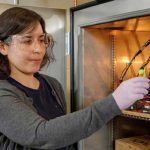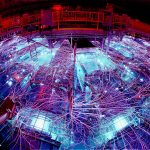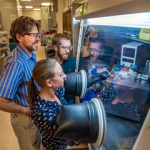Women @ Energy features Yuliya Preger
A Sandia chemical engineer has been recognized by DOE’s Women @ Energy: STEM Rising website, which honors women in STEM fields throughout the DOE complex.
Sandia creates global archive of historical renewable energy documents
The archive, which includes nearly sixty years of concentrating solar power research, is now easily and publicly accessible, a game-changer for solar researchers and engineers.
What if the secret to your brain’s elusive computing power is its randomness?
A group of scientists were awarded a $6 million project to design a computer that leverages unpredictability and mimics how the brain processes information.
Drew Kouri awarded DOE Early Career Research Program grant
The DOE awarded the grant to Drew for his algorithms that solve complex problems in technical fields that may involve uncertain or inexact responses. The grant provides funding for five years to cover his salary and research expenses.
Major upgrade to HOT Shot rocket program culminates in successful launch
The upgrade added new hardware necessary to recover the vehicle and new onboard memory chips, which researchers can retrieve after launch to gather 40 times more data than in previous missions.
Look who’s turning 25
The Z Pulsed Power Facility, or Z machine, celebrates a history of power and innovation at Sandia.
Sandia helps set up future of ocean research with hydrogen fuel cells
Inspired by scientist Lennie Klebanoff’s research, students at the Scripps Institution of Oceanography at U.C. San Diego urged their college to commit to a zero-emissions fleet of research vessels.
Remote high-voltage sensor unveiled at Sandia gamma ray lab
Scientist Israel Owens developed a tiny crystal and laser that can safely measure up to 20 million volts and accurately define the energies of gamma rays, like those generated by the HERMES accelerator.
Better batteries for grid-scale energy storage
Researchers Leo Small, Erik Spoerke and Martha Gross developed sodium batteries that can operate at lower temperatures, at a lower cost, more safely and for longer than standard lead-acid or lithium ion batteries.
World’s smallest, best acoustic amplifier emerges from 50-year-old hypothesis
Acousto-electric devices reveal new road to miniaturizing wireless tech









